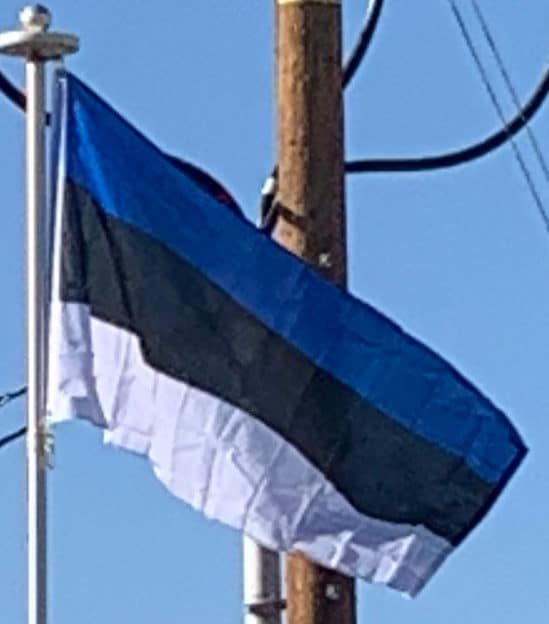Estonia has over 57,000 km of roads, of which almost 13,000 are paved, some limited access expressways.
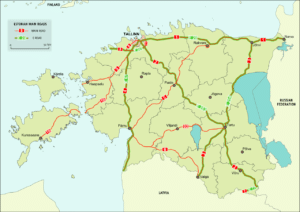
Estonia is the first country in the EU and in the world to introduce a nationwide, publicly serviced charging system for charging the batteries of electric vehicles. The 165 fast charging stations are equipped with connectors of the CHAdeMO standard. They are located throughout the entire country, including the islands, and have a maximum distance of 40–60 km in between.
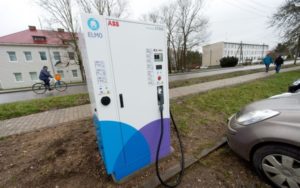
The charging stations can also be navigated via a smartphone app (currently only for Android). The relatively dense network and 30 minute quick charges are built to enable a country-wide electric vehicle network. The system offers a unitary booking service and several different tariffs, some of which appear attractively low priced. The charging station network puts Estonia at the forefront in Europe even though Norway actually has a higher penetration of electric vehicles. Estonia has a rate of 1 electric vehicle per 1000 capita, whereas Norway has 4 EVs per 1000 capita.
Estonia has a total of 900km of railroad, 1200km if you include dedicated industrial lines. There are rail links with both neighboring countries, Latvia and Russia, with a shared gauge so transfers at borders are not required.
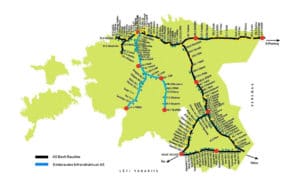
There has been a growing tram network in Tallinn, Estonia since 1888, when traffic was started by horse-powered trams. The first line was electrified on October 28, 1925. The first electric trams were built by Dvigatel, Ltd., in Tallinn before World War II and for some years after that, the last one in 1954. As of 2018, there are four lines: 1 (Kopli-Kadriorg), 2 (Kopli-Ülemiste), 3 (Tondi-Kadriorg) and 4 (Tondi- Lennujaam (Airport)). There have also been lines 5 (Kopli-Vana-Lõuna, shut down in 2004 because of small usage) and 6 (Kopli-Tondi, temporarily used in time of repairs).
Estonia has 45 ports in the State Port Register. With a few exceptions, all of them are on the Baltic Sea. Largest ports are Muuga (near Tallinn), Tallinn (comprises several ports), Paldiski, Kunda, Pärnu and Sillamäe.
There are 13 airports with paved runways across Estonia but Lennart Meri Tallinn Airport is the largest airport and receives all international traffic.
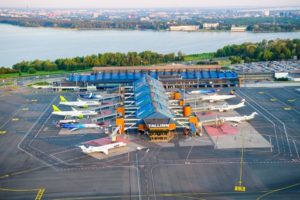
There are numerous water links to the Baltic Sea islands as well as international links to Sweden and Finland.
Flag of Estonia:
The national flag of Estonia is a tricolor featuring three equal horizontal bands of blue (top), black, and white. In Estonian it is colloquially called the “sinimustvalge” (lit. ”blue-black-white”), after the colors of the bands.

First adopted on 21 November 1918 after its independence, it was used as a national flag until 1940 when the Soviet Union occupied Estonia. After World War II, from 1944 to 1990, the Soviet Estonian flag consisted first of a generic red Soviet flag with the name of the republic, then changed to the red flag with a band of blue water waves near the bottom. The Estonian flag, which was also used by the Estonian government-in-exile, was officially re-adopted 7 August 1990 one year before its official restoration of independence.
